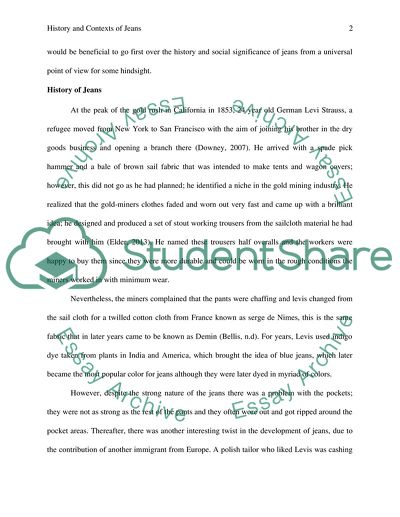Cite this document
(“History and Contexts of Jeans Assignment Example | Topics and Well Written Essays - 2000 words”, n.d.)
History and Contexts of Jeans Assignment Example | Topics and Well Written Essays - 2000 words. Retrieved from https://studentshare.org/history/1799229-history-and-contexts-of-jeans
History and Contexts of Jeans Assignment Example | Topics and Well Written Essays - 2000 words. Retrieved from https://studentshare.org/history/1799229-history-and-contexts-of-jeans
(History and Contexts of Jeans Assignment Example | Topics and Well Written Essays - 2000 Words)
History and Contexts of Jeans Assignment Example | Topics and Well Written Essays - 2000 Words. https://studentshare.org/history/1799229-history-and-contexts-of-jeans.
History and Contexts of Jeans Assignment Example | Topics and Well Written Essays - 2000 Words. https://studentshare.org/history/1799229-history-and-contexts-of-jeans.
“History and Contexts of Jeans Assignment Example | Topics and Well Written Essays - 2000 Words”, n.d. https://studentshare.org/history/1799229-history-and-contexts-of-jeans.


